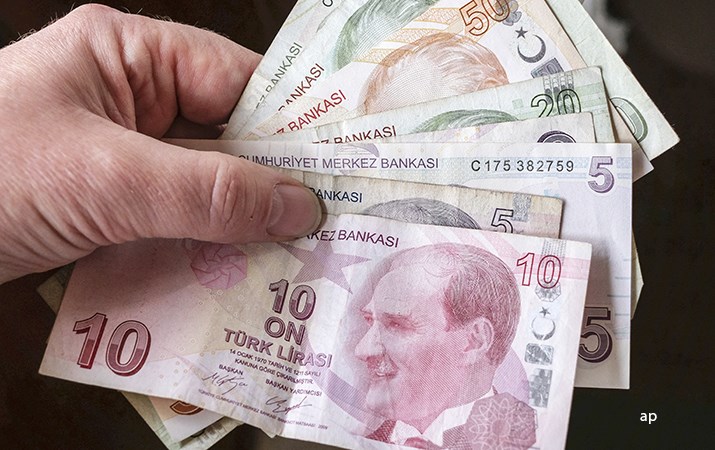as
Emerging market investing has traditionally been focused on growth but investors are starting to look further afield for income these days. As developed world bond markets are, in many cases, offering negative yields and emerging economies are much better managed than in the past, it is natural that many investors may look to these areas for income options.
Of course, there is still currency and political risk to fear – Turkey, Venezuela and Argentina have had crises in recent years – but most emerging bonds are rated as "investment grade" by credit ratings agencies. Rampant inflation seems to be less of a concern than in the past: Mexico, for example, has inflation below 3% but it’s 10-year government yield is nearly 6.8%, compared with the 1.6% yield on offer from US treasures, where inflation is running at 2.3%.
Of course, developed nations like the US and Japan are very unlikely to default on their debt, but investors in these sovereign bonds are still paying a high price for the "safety” of owning them. Active fund managers now have a wide range of yield-producing investments to choose from, including income shares, corporate and government bonds.
We looked at a range of funds rated by Morningstar to show some of the different ways to achieve a decent – and reliable – yield from EM:
Neuberger Berman EM Debt Hard Currency – Silver
This fund is one of the most highly-rated in the area, with a Morningstar Analyst Rating of Silver and a five-star rating. Over five years it has returned nearly 10% on an annualised basis - impressive considering the turbulence in emerging markets over that period.
In 2019 the fund returned more than 10%, beating its benchmark – the JPMorgan Emerging Markets Bond Index Global Diversified – and the Global Emerging Markets Bond category. Morningstar analysts praise the “well-executed and solid process”, experienced team and above-average track record. However, they point out that this country-specific strategy can be risky when a crisis occurs, as it has done recently in Argentina and Venezuela.
Turkey and Russia are the two largest country weightings in the portfolio, followed by Mexico, Ukraine and Azerbaijan. Sovereign or government bonds make up the majority of the sector allocations at just over 60%, although this is below the benchmark's allocation of 80%. The majority of the bonds owned by the fund are below investment grade by credit rating agencies.
JPM Emerging Markets Income – Bronze
This Bronze-rated fund is equity rather than bond focused. It returned 18% last year, according to Morningstar data, comfortably beating its benchmark, the MSCI Emerging Market index.
Fund manager Omar Negyal targets a dividend way in excess of the index and around 60% of the 50- to 80-stock portfolio will be held in companies with a 3% to 6% yield, leading to a current overall yield of just under 4%.
Its top holdings are similar to many growth-focused EM funds, including Chinese insurance giant Ping An (601318) and South Korea’s electronics giant, Samsung (005930). The biggest holding is Taiwan Semiconductor (2330), which is a favourite among emerging market fund managers. Like the growth funds on our list, the JPM Emerging Markets Income Fund is strongly focused on technology and financials, which account for 36% and 37% of assets respectively.
“This fund’s strengths make it an attractive offering for those seeking income-oriented exposure to emerging markets equities,” says Morningstar analyst Andrew Daniels.
Asia is the fund’s main focus, with 36% of the fund invested in emerging Asia and 30% allocated to developed Asian countries.
TCW Funds Emerging Markets LC Income – Bronze
With just $80 million of assets, this fund is much smaller than Neuberger Berman EM Debt ($2.7 billion) and JP Morgan EM Income (£439 million).
The Bronze-Rated fund mainly focuses on emerging market bonds in their local currency - rather than being hedged back to US dollars, which is the case for many EM bonds. Morningstar analyst Karin Andersen says: “The managers’ approach has a good mix of flexibility and caution, as well as thoughtful country analysis, which is key for this very volatile pocket of the fixed-income universe.”
Usually the fund follows the benchmark, the JPMorgan Emerging Markets Bond Index Global Diversified, closely in terms of country weightings, but can also venture into frontier markets and EM currencies. The managers, Alex Stanojevic and Penelope Foley, can up their exposure to a country’s currency if they think it is undervalued, and apply the reverse strategy when the currency is strong.
Top country exposures currently are Brazil, Indonesia, Poland and South Africa – the top holding, according to Morningstar Direct, is Brazil’s 10% yielding sovereign bonds.
In the past five years, the fund has beaten the benchmark in every year apart from 2018, when it lagged by 0.4% because of exposure to Indonesia and Thailand debt. In 2019 the fund returned 8.4%.




























